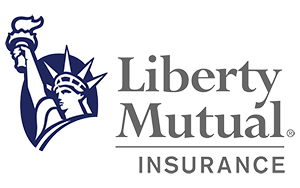AxMedicare
Affordable
Auto Insurance
Find the best auto insurance
plan for your car
Compare prices among best insurers











"*" indicates required fields
Navigating the Spectrum: Car Insurance Types
Selecting the right car insurance is akin to fitting puzzle pieces together – each piece represents a different type of coverage, and finding the perfect match requires careful consideration. With a myriad of options available in the United States, understanding the nuances of each type of car insurance is essential for drivers seeking optimal protection on the road. In this engaging guide, we embark on a journey through the diverse landscape of car insurance types, comparing requirements, prices, and other crucial factors to help you navigate towards the ideal policy.
Understanding the Options:
Before delving into the comparison, let’s familiarize ourselves with the primary types of car insurance available in the USA:
- Liability Insurance: Covers damages and injuries you cause to others in an accident.
- Collision Insurance: Covers damages to your vehicle in a collision, regardless of fault.
- Comprehensive Insurance: Protects your car from non-collision-related damages like theft, vandalism, or natural disasters.
- Personal Injury Protection (PIP) or Medical Payments Coverage: Covers medical expenses for you and your passengers after an accident.
- Uninsured/Underinsured Motorist Coverage: Protects you if you’re in an accident caused by a driver with insufficient or no insurance.
Comparing Requirements and Prices
To provide a comprehensive overview, let’s compare the requirements and average prices for each type of car insurance across different states:
Other Factors to Consider
- Deductibles: Consider how much you’re willing to pay out-of-pocket before your insurance kicks in.
- Coverage Limits: Evaluate whether the minimum required coverage is sufficient for your needs or if additional coverage is warranted.
- Discounts: Inquire about discounts for factors like safe driving, bundling policies, or vehicle safety features.
- Customer Service: Research insurers’ reputations for customer service and claims handling to ensure a smooth experience in times of need.
Decoding Car Insurance: Exploring Coverage Types
Car insurance is the safety net that cushions drivers against the uncertainties of the road. But not all insurance policies are created equal. Understanding the various types of coverage available is crucial for drivers seeking comprehensive protection. In this insightful guide, we unravel the intricacies of car insurance coverage types in the USA, shedding light on the nuances of liability, collision, comprehensive, uninsured/underinsured motorist, medical payments, and personal injury protection (PIP) coverage.
Liability Coverage: Shielding Against Third-Party Claims
Liability coverage is the cornerstone of car insurance, providing financial protection against damages or injuries caused to others in an accident where you’re at fault. It typically comprises two components:
Bodily Injury Liability: Covers medical expenses, lost wages, and legal fees for the other party’s injuries.
Property Damage Liability: Pays for repairs or replacement of the other party’s vehicle or property.
Collision Coverage: Safeguarding Your Vehicle
Collision coverage steps in to cover damages to your vehicle resulting from a collision, regardless of fault. Whether you collide with another vehicle or an object like a tree or pole, collision coverage ensures your car is repaired or replaced, subject to your deductible.
Comprehensive Coverage: Beyond Collisions
Comprehensive coverage offers protection against non-collision-related incidents, including theft, vandalism, fire, natural disasters, and animal collisions. It’s the safety net that shields your vehicle from a myriad of unexpected perils, providing peace of mind on and off the road.
Uninsured/Underinsured Motorist Coverage: Preparing for the Unexpected
Despite legal requirements, not all drivers carry adequate insurance. Uninsured/underinsured motorist coverage steps in to cover your medical expenses and property damage if you’re involved in an accident with a driver who lacks sufficient insurance coverage.
Medical Payments Coverage: Covering Medical Expenses
Medical payments coverage, also known as MedPay, reimburses medical expenses for you and your passengers, regardless of fault. It’s particularly valuable for covering immediate medical costs, such as ambulance rides, hospital stays, and doctor’s visits, without waiting for liability determinations.
Personal Injury Protection (PIP): Comprehensive Medical Coverage
PIP is similar to medical payments coverage but offers broader protection. In addition to medical expenses, PIP may cover lost wages, childcare expenses, and funeral costs, providing comprehensive financial support for you and your passengers after an accident.
Choosing the Right Coverage: Tailoring Protection to Your Needs
When selecting car insurance coverage, it’s essential to assess your individual needs, driving habits, and budget. Consider factors such as your vehicle’s value, your risk tolerance, and state requirements to determine the optimal coverage types and limits for your policy.
Navigating the maze of car insurance coverage types in the USA requires a keen understanding of the protection each type offers. From shielding against third-party claims with liability coverage to safeguarding your vehicle from unexpected perils with comprehensive coverage, each type plays a vital role in ensuring you’re adequately protected on the road. By familiarizing yourself with the nuances of liability, collision, comprehensive, uninsured/underinsured motorist, medical payments, and personal injury protection (PIP) coverage, you can make informed decisions to tailor your insurance policy to your unique needs, providing peace of mind as you embark on your journeys behind the wheel
Factors that affect Car Insurance Rates
Car insurance premiums can vary significantly from one driver to another, and understanding the factors that influence these rates is crucial for every car owner. Below are some factors that insurance companies consider when calculating your car insurance rates. By gaining insight into these factors, you’ll be better equipped to make informed decisions and potentially save money on your premiums.
Average Full-Coverage Car Insurance Rates by State
Car insurance expenses exhibit substantial variation based on location, stemming from each state’s unique minimum insurance stipulations, legal requirements, local risk factors, and other factors. Explore the map below to gauge how comprehensive coverage rates differ across the nation.
Refer to the table below for an overview of average full-coverage car insurance premiums across all states and the District of Columbia. The provided cost estimates pertain to a 35-year-old driver with favorable credit and a spotless driving history.
Average car insurance rates by age and gender
Car insurance rates fluctuate across the nation depending on your location, yet national averages provide a general benchmark for potential costs.
To assess how insurance pricing varies on average according to age and gender, AxQuotes examined rates from the top five auto insurance companies in the U.S. — State Farm, Geico, Progressive, Allstate, and USAA — spanning all 50 states and the District of Columbia.
Full coverage car insurance rates by age and gender
Full coverage car insurance is a style of car insurance, not a specific product. Full coverage policies add extra coverage on top of state minimum requirements. The rates below reflect a policy with comprehensive and collision insurance along with liability, uninsured motorist coverage and other state-required coverage where needed.
| Age | Female | Male |
|---|---|---|
| 20 | $3,127 | $3,561 |
| 30 | $1,667 | $1,697 |
| 35 | $1,621 | $1,634 |
| 40 | $1,584 | $1,589 |
| 50 | $1,474 | $1,485 |
| 60 | $1,421 | $1,438 |
Minimum coverage car insurance rates by age and gender
Basic or minimum coverage car insurance entails meeting the bare minimum requirements mandated by each state. Consequently, policy coverage may vary depending on your location. The rates provided below represent national averages for minimum coverage, but actual rates may significantly differ from state to state.| Age | Female | Male |
|---|---|---|
| 20 | $1,125 | $1,246 |
| 30 | $577 | $572 |
| 35 | $564 | $555 |
| 40 | $554 | $545 |
| 50 | $522 | $518 |
| 60 | $510 | $511 |
Navigating Car Insurance: Policy Limits and Deductibles
Car insurance serves as the guardian angel for drivers, offering protection against the uncertainties of the road. However, understanding the intricacies of policy limits and deductibles is crucial for tailoring coverage that strikes the perfect balance between protection and affordability. In this illuminating guide, we delve into the realm of car insurance in the USA, focusing on policy limits and deductibles, empowering drivers to make informed decisions that align with their needs and budget.
Unraveling Policy Limits: Finding the Right Balance
Policy limits represent the maximum amount your insurance provider will pay for covered losses. They typically consist of two components:
Bodily Injury Liability Limit: This specifies the maximum amount your insurance will pay per person and per accident for injuries caused to others.
Property Damage Liability Limit: This denotes the maximum amount your insurance will pay for damages to another person’s property in an accident.
When selecting policy limits, consider factors such as your assets, potential liabilities, and state requirements. While opting for higher limits provides greater financial protection, it also comes with higher premiums. Balancing your coverage needs with your budget is key to finding the optimal policy limits.
Deciphering Deductibles: Striking the Right Balance
Deductibles represent the amount you’re responsible for paying out-of-pocket before your insurance coverage kicks in. They come into play for collision and comprehensive coverage and can vary depending on your policy.
Collision Deductible: This is the amount you must pay towards repairs or replacement of your vehicle after a collision.
Comprehensive Deductible: This is the amount you’re responsible for paying for non-collision-related damages, such as theft, vandalism, or natural disasters.
Choosing the right deductible involves weighing your financial situation and risk tolerance. A higher deductible typically results in lower premiums but requires you to pay more in the event of a claim. Conversely, a lower deductible means higher premiums but less financial burden at the time of a claim.
Tailoring Coverage to Your Needs and Budget
When selecting policy limits and deductibles, it’s essential to assess your individual circumstances and preferences. Consider factors such as your vehicle’s value, your driving habits, and your ability to cover out-of-pocket expenses. Additionally, familiarize yourself with state requirements to ensure compliance while tailoring coverage to your specific needs.
Navigating the realm of car insurance policy limits and deductibles in the USA demands careful consideration and strategic planning. By understanding the nuances of policy limits and deductibles and evaluating factors such as financial situation, risk tolerance, and state requirements, drivers can tailor coverage that provides optimal protection without breaking the bank. Remember, striking the right balance between coverage and affordability is key to ensuring peace of mind as you journey through life’s highways and byways.
Smooth Sailing: Navigating the Claims Process
When the unexpected happens on the road, car insurance serves as the beacon of hope, offering a lifeline to drivers in distress. However, not all insurance companies are created equal when it comes to handling claims. Understanding the claims process of different insurers is paramount for ensuring a smooth journey through the aftermath of an accident. In this enlightening guide, we embark on a voyage through the realm of car insurance in the USA, focusing on the claims process and evaluating factors such as ease of filing claims, customer support availability, and the company’s track record of efficiency in claims handling.
Setting the Stage: Understanding the Claims Process
The claims process is the bridge between adversity and resolution for drivers involved in accidents or facing damages to their vehicles. It typically involves the following steps:
- Filing a Claim: This entails notifying your insurance company of the incident and providing relevant details such as the date, time, location, and parties involved.
- Assessment: After receiving the claim, the insurer assesses the damages, conducts investigations if necessary, and determines coverage eligibility.
- Resolution: Once the assessment is complete, the insurer provides compensation or arranges repairs according to the terms of the policy.
- Follow-up: Throughout the process, the insurer maintains communication with the policyholder, providing updates on the status of the claim and addressing any concerns or questions.
Evaluating the Claims Experience: Key Considerations
When comparing insurance companies, several factors come into play in evaluating the claims process:
- Ease of Filing Claims: Look for insurers that offer convenient and user-friendly channels for filing claims, such as online portals, mobile apps, or 24/7 helplines.
- Customer Support Availability: Assess the accessibility of customer support channels, including phone, email, or live chat, and consider insurers known for responsive and attentive customer service.
- Efficiency in Claims Handling: Research the insurer’s track record of efficiently processing claims, including turnaround times for assessments, approvals, and disbursements.
- Reputation and Reviews: Explore customer reviews, ratings, and testimonials to gauge the insurer’s reputation for reliability, transparency, and fairness in claims settlement.
What Sets Us Apart

Human support
Our team of licensed experts is here to answer questions, handle paperwork, and help you make decisions with confidence.

Fully independent
From exploring coverage options to making policy adjustments as your life changes, we're your advocate at every step.

Security you can trust
Your security is our priority. We use industry-leading security practices to help keep your information safe.
Yes, most leasing and financing agreements require you to maintain comprehensive and collision coverage on the vehicle until it is fully paid off. This is to protect the lender’s financial interest in the car. Additionally, most states mandate that drivers carry at least a minimum amount of liability insurance coverage.
AxMedicare.com is powered by Neelu Agency LLC DBA AxMedicare, a non-government marketing agency. Not affiliated with or endorsed by any government agency.
This is an advertisement
AxMedicare.com does not offer every plan available in your area. Currently, we represent 43 organizations which offer up to 3,745 products in your area. Please contact Medicare.gov, 1–800–MEDICARE, or your local State Health Insurance Program to get information on all of your options. (TTY users should call 1-877-486-2048), 24 hours a day/7 days a week to get information on all of your options.
Not all plans offer all of these benefits. Availability of benefits and plans varies by carrier and location. Deductibles, copays, coinsurance, limitations, and exclusions may apply.
The information provided on this site has been developed by AxMedicare for general informational and educational purposes. We do our best to ensure that this information is up-to-date and accurate. Any insurance policy premium quotes or ranges displayed are non-binding. The final insurance policy premium for any policy is determined by the underwriting insurance company following application.
Enrollment in the described plan type may be limited to certain times of the year unless you qualify for a Special Enrollment Period.
G2 Certification – Mariam Sallam – https://g2risksolutions.com/approved-health-insurance-provider/?pdb=6476
Copyright 2025 axmedicare.com | All Rights Reserved.